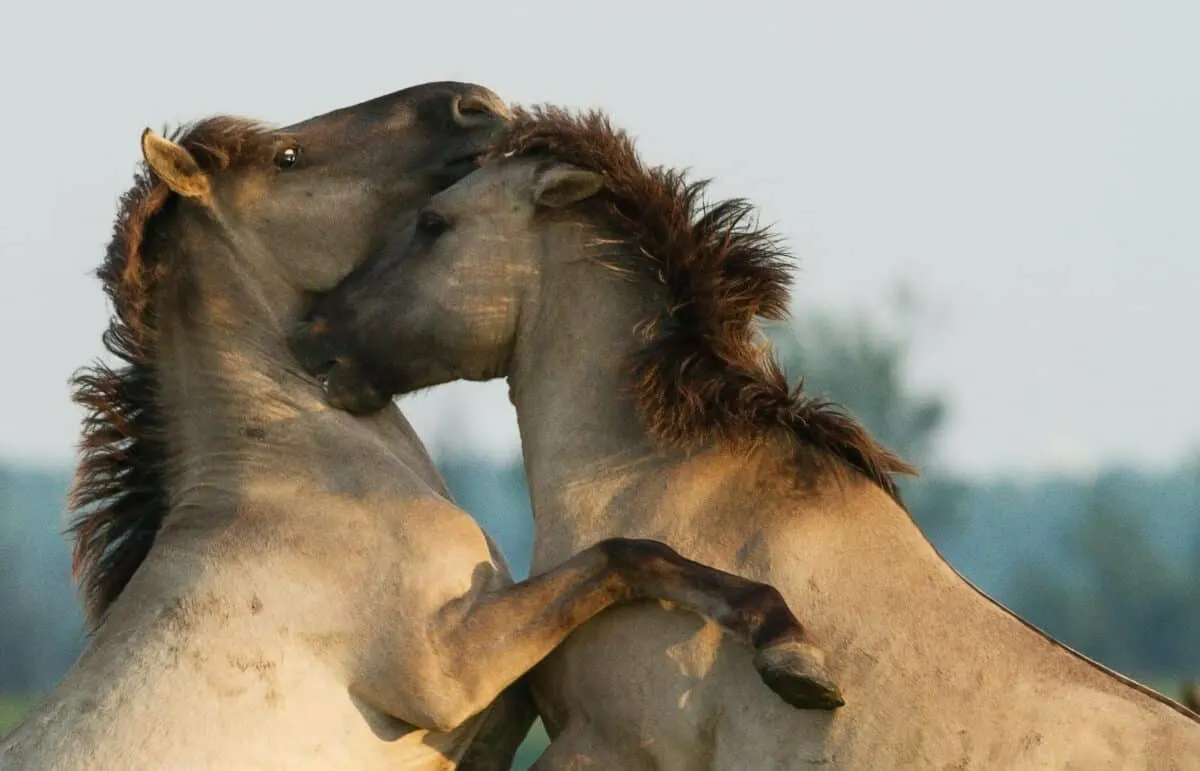Our expert-vetted content is grounded in current scientific publications, yet we acknowledge science’s ever-evolving nature. Read our full editorial and disclosure policy.
Introduction
Welcome to our article on the existence of Wild Horses in America. I am admittedly a ‘horse-girl’ and have been fortunate enough to grow up surrounded by them. As a qualified Animal Scientist and vet student, I couldn’t help but dive into these wild and majestic animals. I hope you enjoy learning more about them.
We dive into the reality of beautiful, majestic wild horses running free and their existence in America today. The way these herds are structured and the dynamics of an ‘outsider’ stallion when they attempt to take over a herd are explained in this article. Read below to learn more about wild horses that still exist in America and elsewhere today in the 21st century.
Watch our expert interview here to learn more about wild horses and their interactions.
What is a ‘wild horse’?
A wild horse lives in the wild without direct human care or management. These horses are descendants of the domesticated horse. They may have escaped or been released into the wild and have subsequently adapted to life in the wild over several generations.
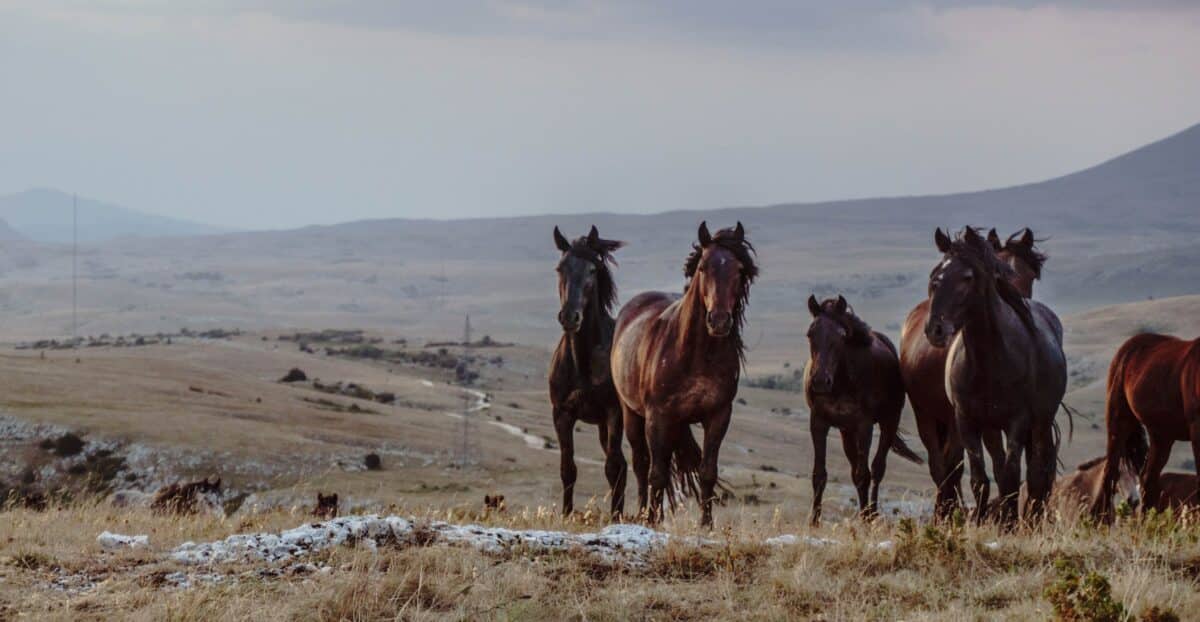
How do they survive in the wild?
Wild horses are hardy and adaptable. They have evolved to survive diverse and often harsh environments. They form social structures, often found in bands or herds led by a dominant stallion, with mares and their offspring making up the rest of the group.
Where are there wild horses?
The most well-known wild horses are in the United States known as mustangs. Mustangs are descendants of horses brought to the Americas by Spanish explorers in the 16th century. Other notable wild horse populations include the Brumbies in Australia and the Przewalski’s horse in Mongolia. Przewalski’s horse is arguably the only truly wild horse species in the world, as it has never been domesticated. Przewalski’s horse also has a different genome to domesticated horses.
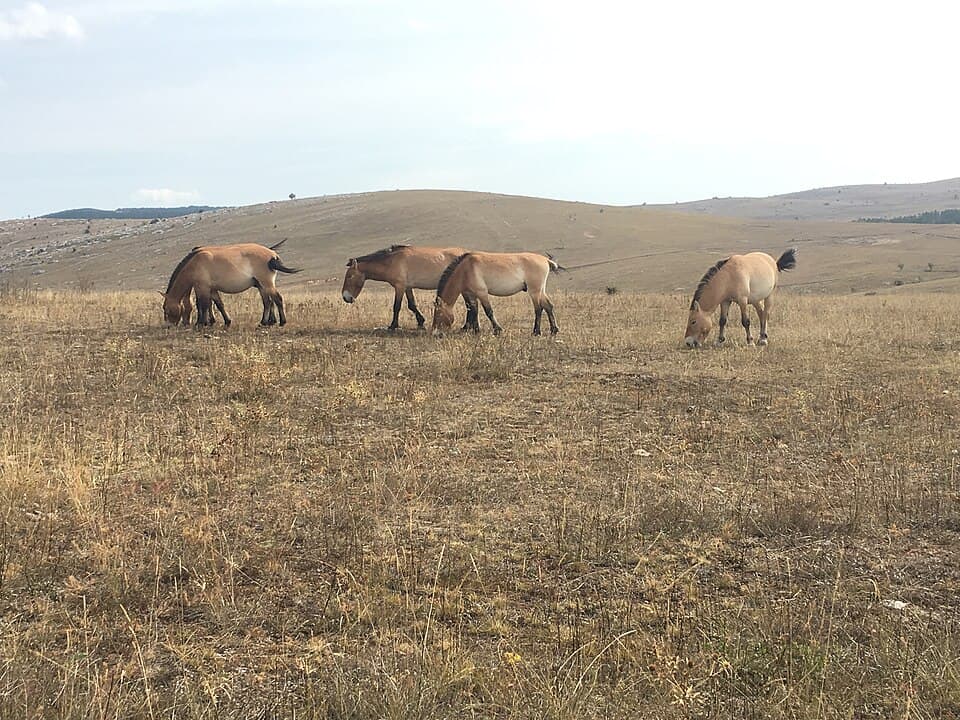
Whilst these horses live in the wild, they are not considered “wild” in the biological sense, as they are descended from domesticated horses. Wild horses can be referred to as feral to describe these populations more accurately. However, they are often referred to as wild horses in common usage.
Are there still Wild horses in America?
Wild horses (and burros) can live on land designated for them in America today. These horses can be found on land referred to as Herd Management Areas (HMAs), found in ten western states in America. These states include Arizona, California, Colorado, Idaho, Montana, Nevada, New Mexico, Oregon, Utah, and Wyoming.
A brief history of the Mustangs
Wild horses, an iconic symbol of the American West, have a rich and complex history that intertwines with the United States’ development. These majestic creatures, mustangs, are descendants from the horses brought to the New World by Spanish explorers in the 16th century. Over time, some of these horses escaped or were released, forming feral herds that roamed the vast landscapes of North America.
The term “mustang” comes from the Spanish word “mestengo,” which means “stray livestock animal.” The Mustang’s hardiness and adaptability are legendary. They have thrived in diverse environments, from the arid deserts of the Southwest to the rugged mountainous regions of the Northwest. These horses have evolved to withstand harsh conditions, demonstrating remarkable resilience and survival instincts.
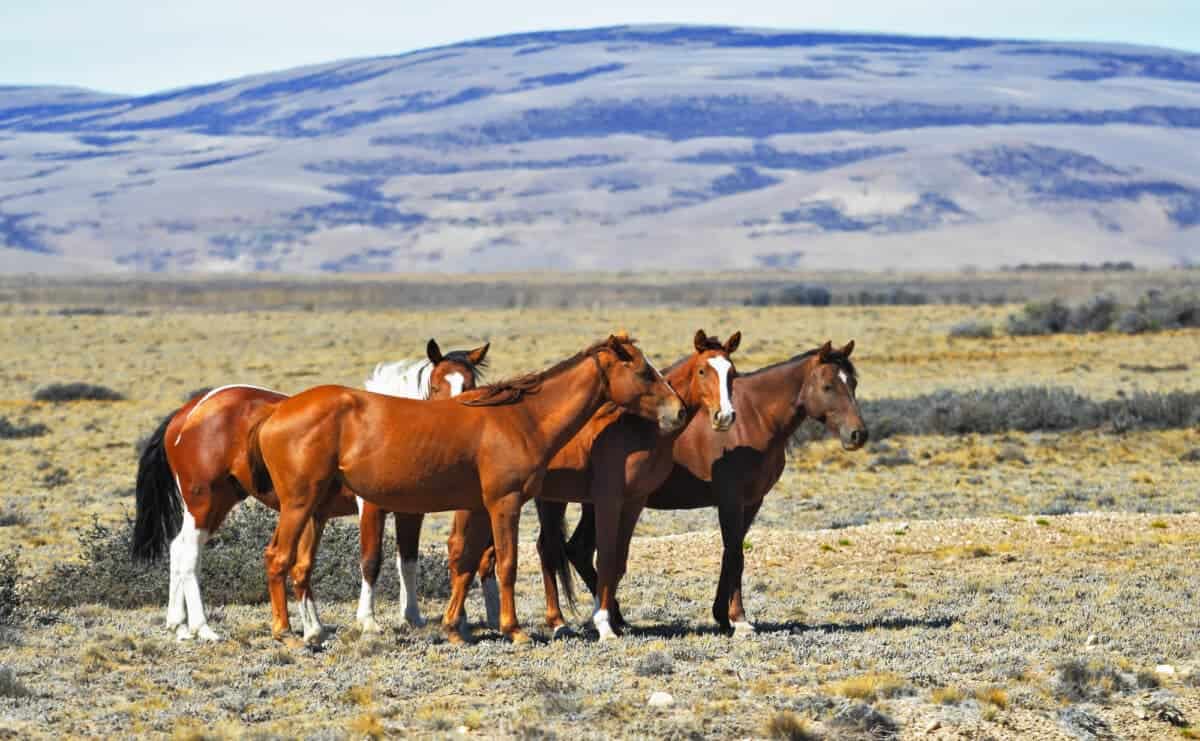
Controversy of Wild Horses
Wild horses in America are a living testament to the country’s pioneering spirit and rugged individualism. Their untamed nature and beauty have inspired many works of art, books, and film, and they continue to stimulate the imagination of people worldwide. However, their existence is not without controversy.
The management and preservation of wild horse populations have been contentious issues. The Bureau of Land Management (BLM) protects and manages these horses to ensure their long-term survival while balancing the land’s needs and other species’ needs. The BLM uses various methods, including roundups and fertility control, to maintain sustainable herd sizes. However, these practices have been criticized by animal rights advocates. They argue that they are inhumane and disrupt the natural behaviors of these wild animals.
Protection of America’s wild horses
Despite the challenges, there have been significant efforts to protect and save America’s wild horses. For instance, the Wild Free-Roaming Horses and Burros Act of 1971 provides legal protection for these animals on federal land. The Act states that wild horses and burros as “living symbols of the historic and pioneer spirit of the West” and mandates their protection from “capture, branding, harassment, or death.”
Adoption programs have also been implemented, allowing individuals to adopt a wild horse and provide it with a caring home. These programs have successfully found homes for thousands of horses, helping to alleviate the pressure on public lands.
Scientific research on wild horses has also increased our understanding of their behavior, genetics, and ecological role. Studies have shown that wild horses can benefit ecosystem dynamics by promoting plant diversity and providing food for predators.
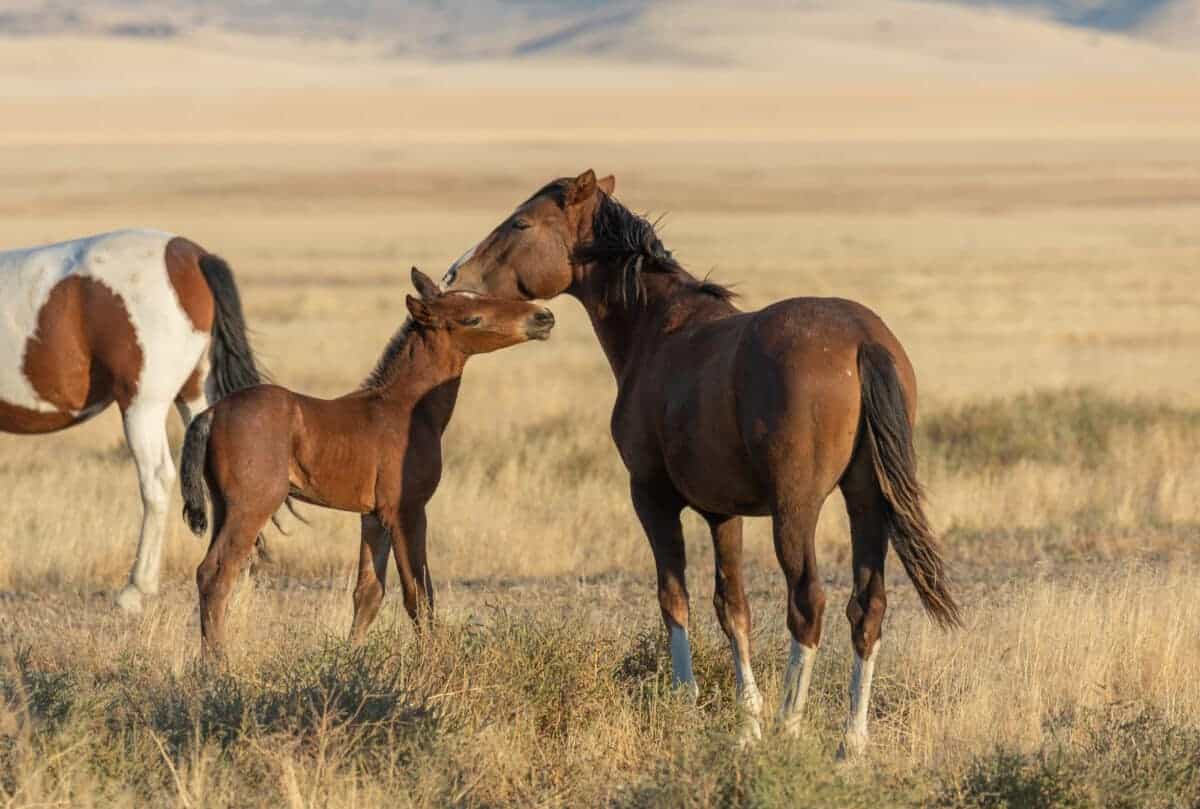
Herd behavior of mustangs
Wild mustang herds exhibit complex social structures and behaviors that are fascinating to observe and study. The basic social unit in a Mustang herd is the band, which typically consists of one dominant stallion, several mares, and their offspring.
The dominant stallion
The dominant stallion is the leader of the band and is responsible for its protection. He maintains his position through displays of dominance and occasional fights with challenging stallions. These fights, while dramatic, rarely result in serious injury and usually end when one horse backs down. The dominant stallion also has the right to mate with the mares in his band.
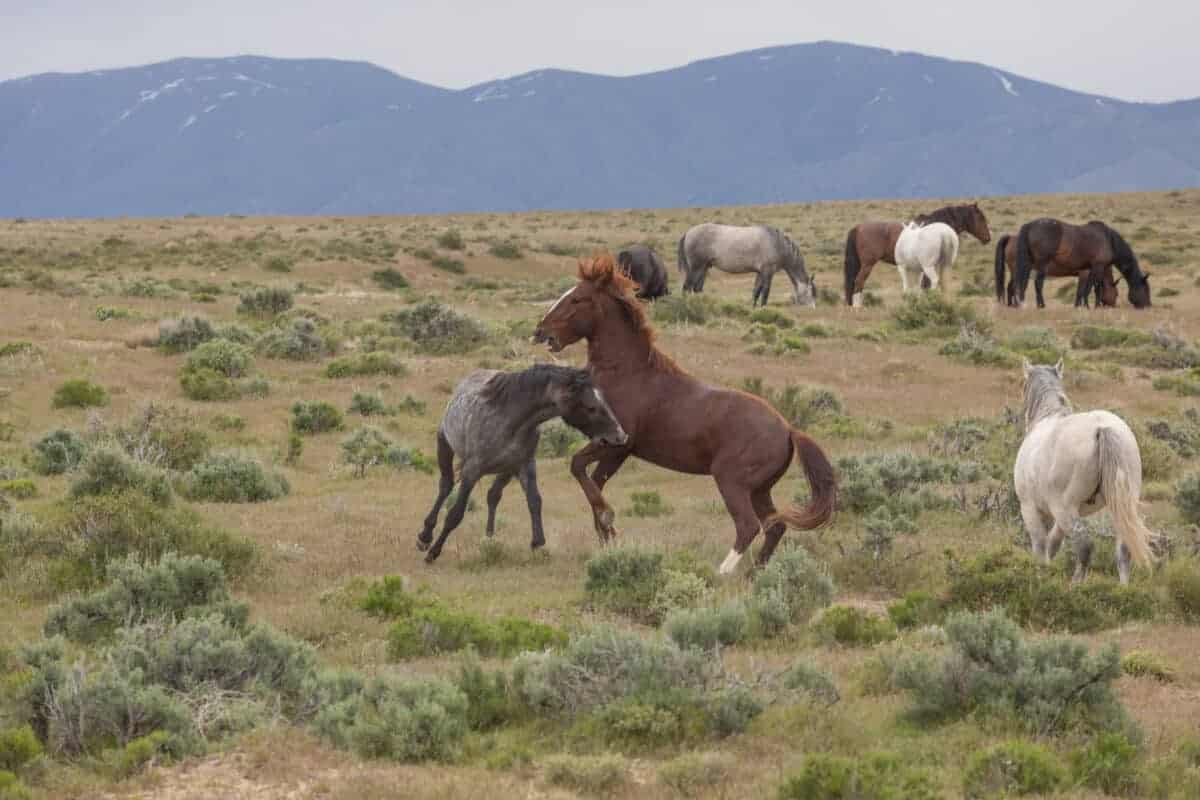
The hierarchy of the herd
The band’s members also have a hierarchical structure, usually based on age and experience. Older, more experienced mares often have higher status. Mares are responsible for teaching their foals the social rules of the band and often stay close to their offspring even when they become adults.
The males
A young male, or bachelor horse, will elect to leave or get driven out of their birth bands when they reach sexual maturity. This occurs at around two years of age. These young stallions often form bachelor bands, where they engage in play fights that help them develop the skills they’ll need to win their own band along with a harem of their mares.
The challenge of a dominant stallion
The dynamics within a band can change. Stallions can lose dominance due to age, injury, or a successful challenge by another stallion. When this happens, a new stallion takes over the band, leading to a shift in the social structure.
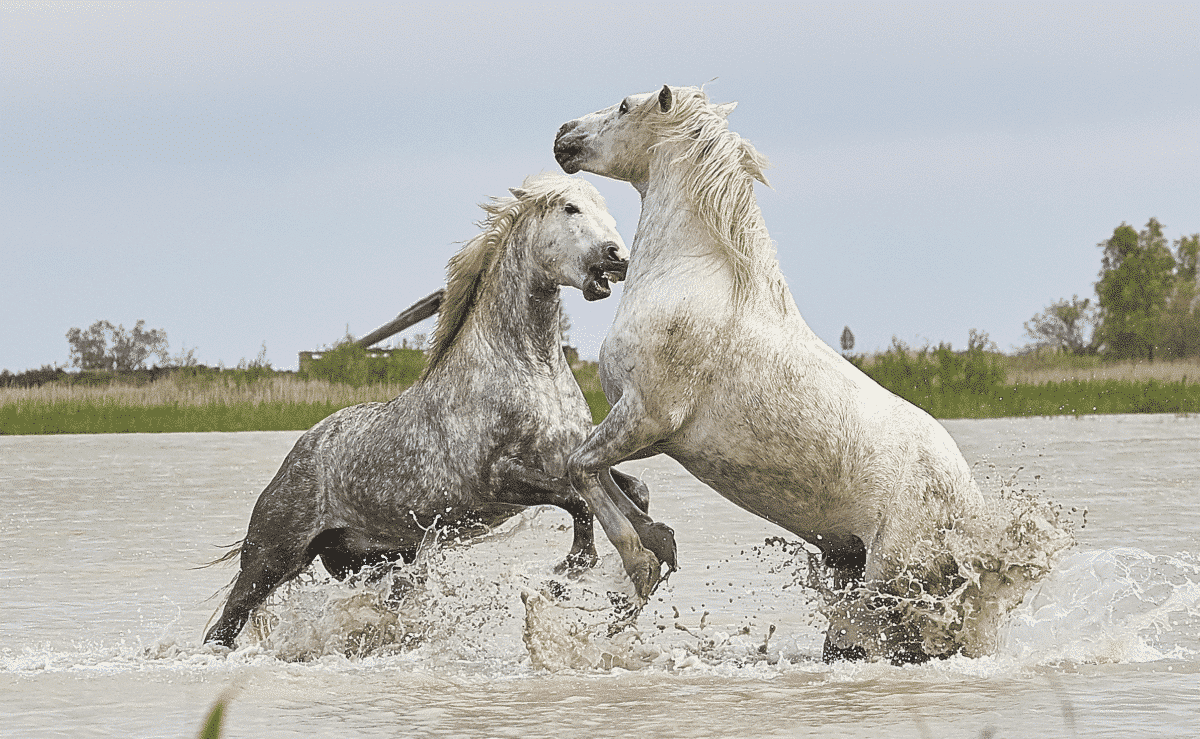
These social structures and behaviors are essential for the survival of the herd. They provide protection against predators, help raise the next generation, and ensure genetic diversity within the population. Understanding these dynamics is also crucial for managing and preserving wild mustang populations.
| Attribute | Wild Horses | Domestic Horses |
|---|---|---|
| Environment | Natural habitats like deserts, grasslands, and forests. | Managed environments like farms, stables, and pastures. |
| Human Interaction | Minimal, mostly during management activities or research. | Regular; trained for riding, work, or companionship. |
| Diet | Natural forage, including grasses, shrubs, and available water sources. | Often supplemented with grains, hay, and vitamins. |
| Social Structure | Form bands or herds with a dominant stallion, mares, and their offspring. | Breeding is often managed and controlled by humans. |
| Health Care | Rely on natural immunity and survival instincts. Injuries or illnesses may not receive treatment. | Regular veterinary care, including vaccinations, deworming, and dental care. |
| Lifespan | Can be shorter due to predators, harsh conditions, or lack of medical care. | Often longer due to medical care, protection from elements, and balanced nutrition. |
| Physical Appearance | Often more robust and hardy due to natural selection. Coats may be duller and hooves stronger. | Breeding for specific traits can result in a variety of appearances. Regular grooming enhances coat shine. |
| Behavior | More cautious and wary due to survival instincts. | Generally more docile and used to human interaction. |
| Reproduction | Natural mating behaviors and cycles. | It can be shorter due to predators, harsh conditions, or lack of medical care. |
Wrapping it up
In conclusion, wild horses in America are a significant part of the country’s cultural and natural heritage. Their presence on the landscape reminds them of the country’s historical past and the untamed spirit of the West. Despite their challenges, efforts to protect and preserve these magnificent creatures continue, fueled by the recognition of their intrinsic value and the desire to ensure their survival for future generations. The story of America’s wild horses is a testament to the enduring power of nature and the importance of conservation in a rapidly changing world.
If you enjoyed reading this, check out where horses and cats come from. Or even dive into feral cats that are taking over Australia. There is even Sampson who still holds the record for the largest horse ever recorded.
Yes, there are wild horses in South Africa. One of the most well-known populations resides in the Garub Plains near the town of Aus in Namibia, which is close to the South African border. These horses are believed to be descendants of horses used in World War I.
Yes, wild horses still exist in various parts of the world, including the United States (mustangs), Australia (Brumbies), and Mongolia (Przewalski’s horses). However, it’s worth noting that many of these horses are technically feral rather than truly wild, as they are descendants of domesticated horses.
A wild horse in the United States is commonly called a mustang. In Australia, they are known as Brumbies. The Przewalski’s horse is considered the only truly wild horse species that has never been domesticated.
Yes, there are populations of wild or feral horses in Africa. The most famous are the Namib Desert horses living near Aus in Namibia. While not in large numbers, these horses have adapted to the harsh desert conditions.
Join our Forum for free today!


